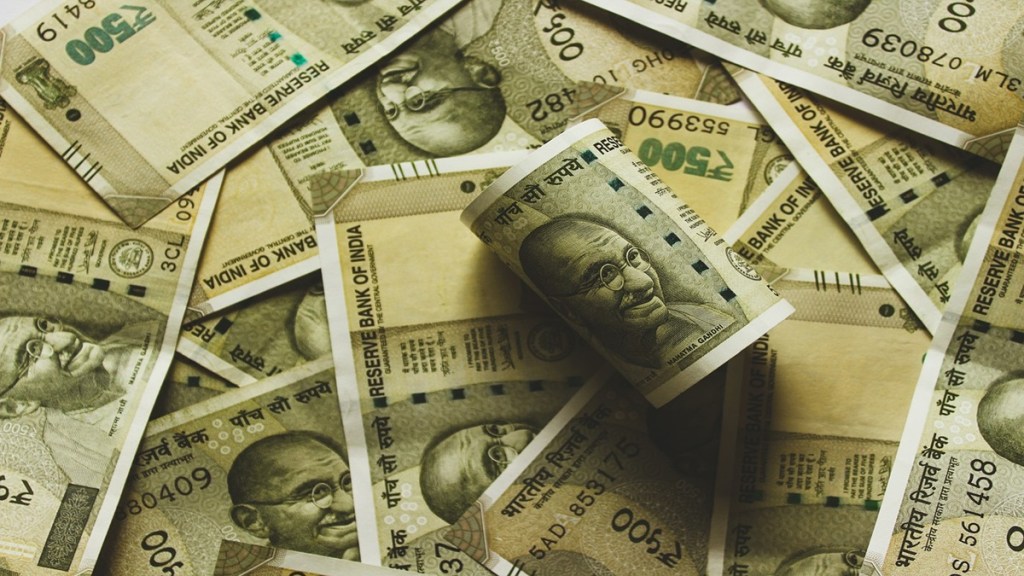– By Chinmay Joshi
As per the First Advance Estimates (FAE) of national income data released by the NSO, MOSPI, GoI, the economic growth in real terms (i.e. GDP at constant market prices) is estimated to decline by 1.80% and register a 6.40% growth rate in FY 2024-25 as compared to the growth rate of 8.20% as per the provisional estimates of national income for FY 2023-24. In the ensuing period, too, the growth outlook for India is less optimistic and subdued. For FY 2025-26, the RBI has predicted a growth rate of 6.70% in its latest MPC meeting, while the Economic Survey for 2024-25 predicted that the growth rate would remain in the range of 6.30%-6.80%.
In a closed economy, consumption and investment are two key drivers of economic growth. A cycle of economic expansion is driven by consumer spending or the consumption expenditure, which generates demand for goods and services and motivates corporations to invest in productive capacities. As per the FAE, the private final consumption expenditure (PFCE) is expected to increase to 7.30% in 2024-25 over 4.00% as per the PE of 2023-24, and government final consumption expenditure (GFCE) is expected to increase to 4.10% from 2.50% in the same period. However, the share of both these components in the GDP is expected to remain subdued at 56.30% and 9.30%, respectively, indicating a suboptimal success over the previous year. The investment, as reflected by the Gross Fixed Capital Formation (GFCF), is expected to decline from 9.00% in 2023-24 to 6.40% in 2024-25, while its share of GDP is expected to remain the same. This suggests that there is much to be desired from these two components of economic growth. Against this backdrop, the government, through its first full-year budget presented on February 01, 2025, emphasizes reviving decelerating economic growth, reining in inflationary pressures, and boosting stagnant wages and consumption expenditure, among other things, while achieving fiscal prudence.
It is projected that altering the tax rates will be helpful in generating the consumption expenditure and increase in discretionary and non-discretionary spending and thereby generating additional tax revenues in the form of indirect taxes. In this regard, the government is optimistic that the significant adjustments made to the personal income tax slabs, which propose no tax up to Rs. 12 Lakhs in FY 2025-26, will boost tax collection substantially and help widen the tax base. The gross tax revenue will primarily be driven by the increase in income tax revenues, which is projected to rise by 14.39% in budget estimates (BE) of 2025-26 compared to revised estimates (RE) of 2024-25. The substantial tax relief given to the middle class is expected to significantly increase the disposable income and thereby provide a much-needed fillip to the frail consumer spending. However, in this context, it is worthwhile to note that such fiscal sops in the absence of adequate employment generation will be a futile endeavour to achieve the ultimate objective of reviving the consumption expenditure. This has been aptly highlighted by the Economic Survey 2024-25, which noted that India should create 78.5 lakhs non-farm jobs annually until 2030 to attain sustainable, equitable, and inclusive economic growth. It is also important to note that the revenues from the corporate taxes are not expected to rise significantly as a result of various tax concessions given in the past. The indication of lacklustre investment prospects along with low wage growth in the private sector despite substantial accumulation of profits will inevitably dent the rising aspirations of lakhs of youths entering the labour force annually in the wake of low employment generation.
In order to achieve the mandated target enshrined in the Fiscal Responsibility and Budget Management (FRBM) Act, 2003, the budget proposes to bring further reduction in the fiscal deficit to 4.40% of GDP in 2025-26 as compared to 4.80% as per the RE of 2024-25. However, the reduction in revenue and capital expenditures will play an important role in achieving the path of fiscal consolidation. This is particularly significant as it indicates that the crucial long-term investments in the form of capital outlays/expenditures will be pruned in order to offset any potential downfall arising out of adjustments made in the tax rates. The expenditures on both these accounts are budgeted to reduce to 11.04% and 3.14% of GDP in 2025-26, respectively, vis-à-vis 11.44% and 3.42% of GDP in 2024-25. As per the RE of 2024-25, too, a similar trend is visible, where expenditures on both these accounts are revised downwards by 0.30% and 8.34%, respectively, over BE of 2024-25. The decline in the revenue expenditure indicates that the generation of new employment in the government sector in the upcoming period will be affected. Similarly, the fact that the allocation for capital expenditure has not been increased significantly is concerning, as it plays a vital role in reaping the benefits of the multiplier effect through investment in infrastructure development, transportation, logistics, acquiring new machinery and equipment, among others. The actual spending less than the budgeted allocation on the capital account will not augur well for growth augmentation and particularly for employment generation going ahead.
Despite optimism about the Indian economy, there are some critical areas, inter alia, such as falling domestic consumption, rising unemployment, and dwindling agricultural growth, which need adequate and urgent attention. The FM, in her budget speech, has emphasised four engines of growth, viz., agriculture, MSME, investment, and exports, to bolster economic growth. The effective implementation of policy measures pertaining to growth drivers in the budget is the need of the hour. Aspirational and emerging India not only requires the rapid double-digit growth but also needs to insulate itself from the dangers of jobless growth.
(Chinmay Joshi is a Research Associate, Finance and Economics, at Bhavan’s SPJIMR, Mumbai.)
(Disclaimer: Views expressed are personal and do not reflect the official position or policy of Financial Express Online. Reproducing this content without permission is prohibited.)

